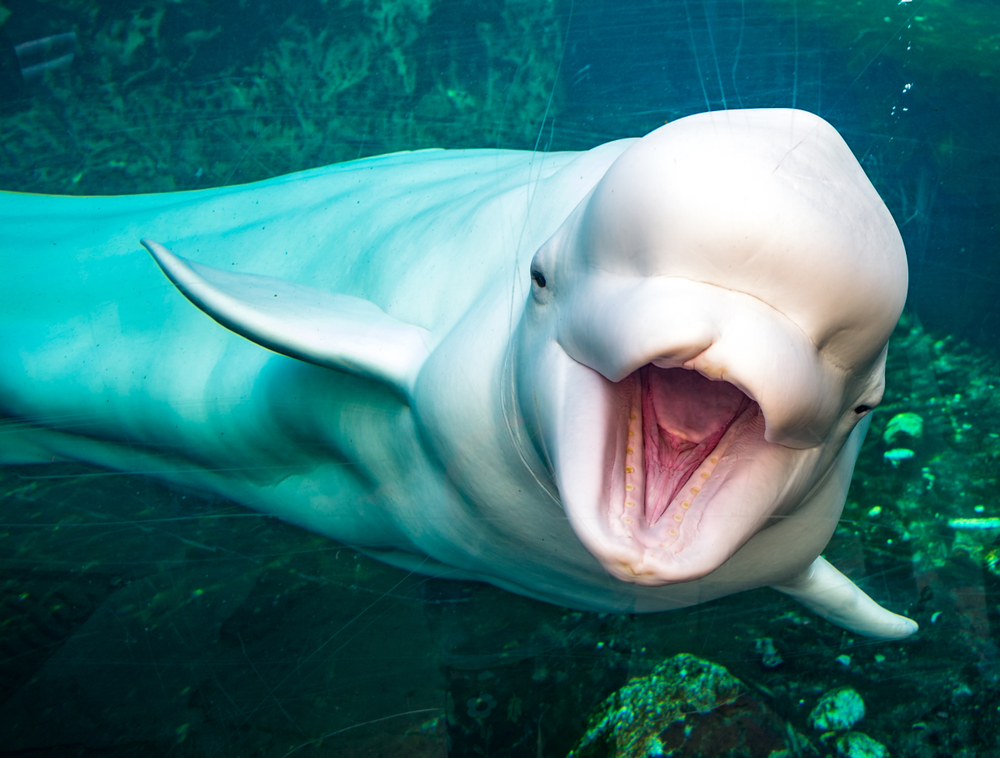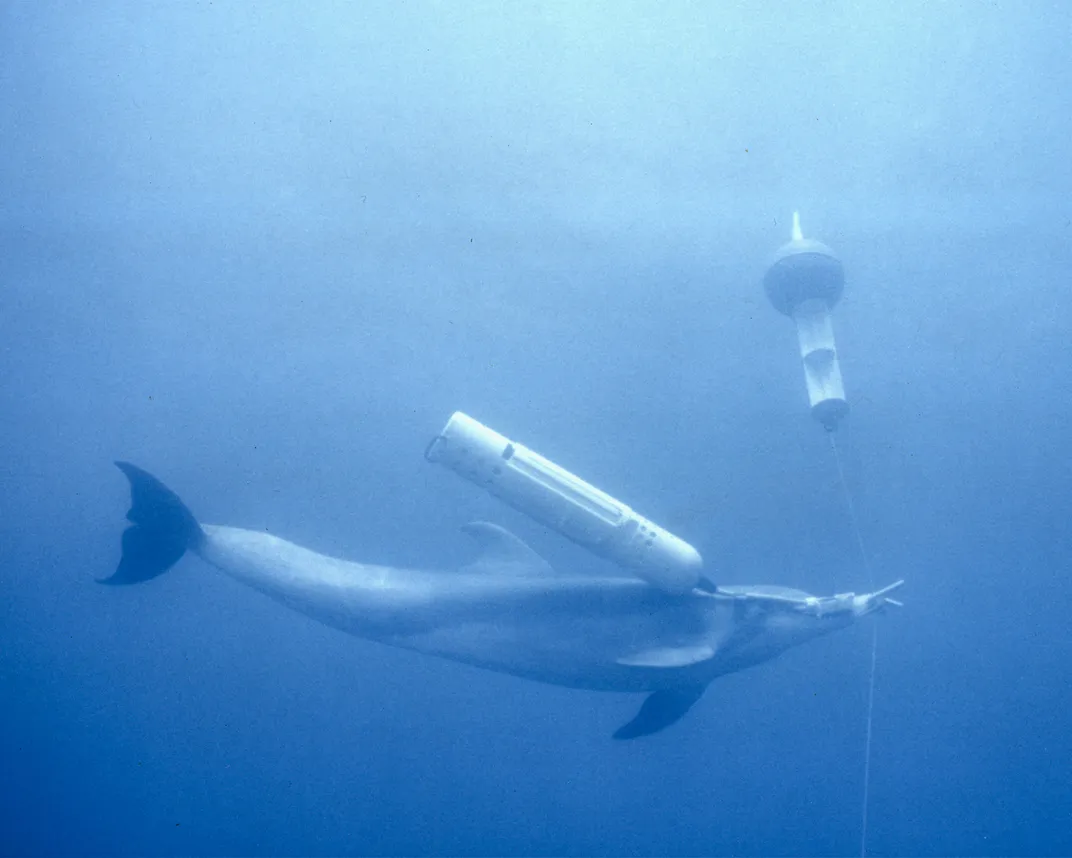In 1984, people in the U.S. Navy Marine Mammal Program (NMMP) heard strange noises in the dolphin and whale enclosure. It sounded like two people talking indistinguishably. But that was only the beginning. Later that day, a diver in the enclosure climbed out of the water and asked, “Who told me to get out?” None of his colleagues did. It turned out to be Noc, the beluga whale, mimicking his human trainers.
Noc the Talking Beluga Whale

The diver was near the surface when he heard someone distinctly say “out, out, out!” He was the first to notice Noc (pronounced no-see) effectively imitating human speech. The team began recording his vocalizations and used rewards to teach him to “speak” on command. They later placed a pressure sensor in Noc’s nasal cavity to determine how whale biology can produce these noises.
Imitating human speech patterns

“We were sceptical at first,” said the late Sam Ridgway, president of the National Marine Mammal Foundation, to New Scientist in 2012. But their suspicions were confirmed after recording and analyzing Noc’s sound waves. “They were definitely unlike usual sounds for a [beluga], and similar to human voices in rhythm and acoustic spectrum.” Ridgway was the lead author of the study investigating Noc’s behavior.
A new type of beluga speak

The pressure sensors confirmed Noc was using the same mechanisms as his typical whale calls. However, Noc was imitating the rhythm of human speech, as well as lowering his pitch in several octaves to better replicate a human voice. To accomplish this, Noc varied the pressure in his nasal tract while inflating the vestibular sac in his blowhole and adjusting other relevant muscles. All of these efforts seemed deliberate, so the team determined Noc must be trying to communicate with them. “Our observations suggest that the whale had to modify its vocal mechanics in order to make the speech-like sounds,” said Ridgway to the California Academy of Sciences in 2012. “Such obvious effort suggests motivation for contact.”
Read More: Footage Shows Tragic Death of SeaWorld Trainer After Being Savagely Killed By Whale
Noc the Cold Ops recruit

Noc had a history more interesting than most captive beluga whales. He was actually a U.S. Marine. In the early 1960s, the United States began to train marine mammals with the navy to detect underwater mines, recover test torpedoes, and similar tasks. About a decade later, the focus of the naval cold war turned to the Arctic, where dolphins and sea lions couldn’t swim to where Soviet submarines lurked. So the navy turned to beluga whales, who could withstand frigid water and low visibility, and have sonar and retrieving abilities. So began the “Cold Ops” initiative.
Navy beluga whale

Two-year-old Noc was among the six belugas caught by a pair of Inuit hunters, and he was the youngest of the “recruits”. He spent the rest of his life in captivity, working alongside human trainers. He was deployed for two top-secret Navy missions before dying from meningitis at age 23 in 1999. But the height of his fame came in 2012, when the journal Current Biology published the study examining his speech.
“He wanted to make a connection”

Hull Technician Fireman Stefan Gingerich gives positive reinforcement during a mine countermeasure exercise in the Pacific. Jennifer A. Villalovos / U.S. NAVY
“Noc really warmed my heart,” said one of Noc’s early trainers, Michelle Jeffries, to Smithsonian Magazine in 2014. She theorized his “easygoing” personality motivated him to learn how to speak to humans. “He wanted people’s attention. He wanted you to stay around and interact with him and rub him…” She described him as patient and eager. “Noc was the kid who was willing to try. I think that was part of the thing behind him mimicking speech. He liked watching people. He liked being around people. The connection. He wanted to make a connection. I think that was his thing. He liked the interface.”
Chatterbox

Once the trainers realized Noc was speaking, they began recording as many of his episodes as they could. He only spoke when people were around, and not when he was alone with other whales. He’d babble underwater and in open air, on command and on his own accord. Eventually, Jeffries explained, she only needed to point at the beluga and say “out” for him to launch into a brief ramble.
A tragic life

“We do not claim that our whale was a good mimic compared to such well-known mimics as parrots or myna birds,” the study concluded. “However, the sonic behavior we observed is an example of vocal learning by the white whale. It seems likely that Noc’s close association with humans played a role in how often he employed his human voice, as well as in its quality.” Noc’s vocal imitation proves the animal’s complex cognition and intelligence, which makes his lifelong captivity even more tragic in hindsight.
Former trainer at SeaWorld Samantha Berg was not amused by the beluga’s recordings. “It gave me chills,” she said. “There’s something about the quality of the sound that’s deeply disturbed. Like if you woke up at 3 o’clock in the morning and heard somebody screaming in distress… I’ve heard a lot of beluga noises, and I’ve never heard a beluga sound like that.”
Going silent

Marine mammal behaviorist Toni Frohoff also believes Noc’s speech came from distress. “Wild, free-ranging belugas do not initiate this kind of vocal behavior, no matter how many boats and people may be around. So there’s an obvious analogy between these geographically isolated and socially deprived animals in the wild and captive belugas like Noc.” She believes the mimicking was a way to cope with boredom and social deprivation. But after chatting for four years by 1999, Noc stopped, only speaking “beluga” until his death.
Read More: Enormous Humpback Whale Filmed Jumping Next To A Fishing Boat

